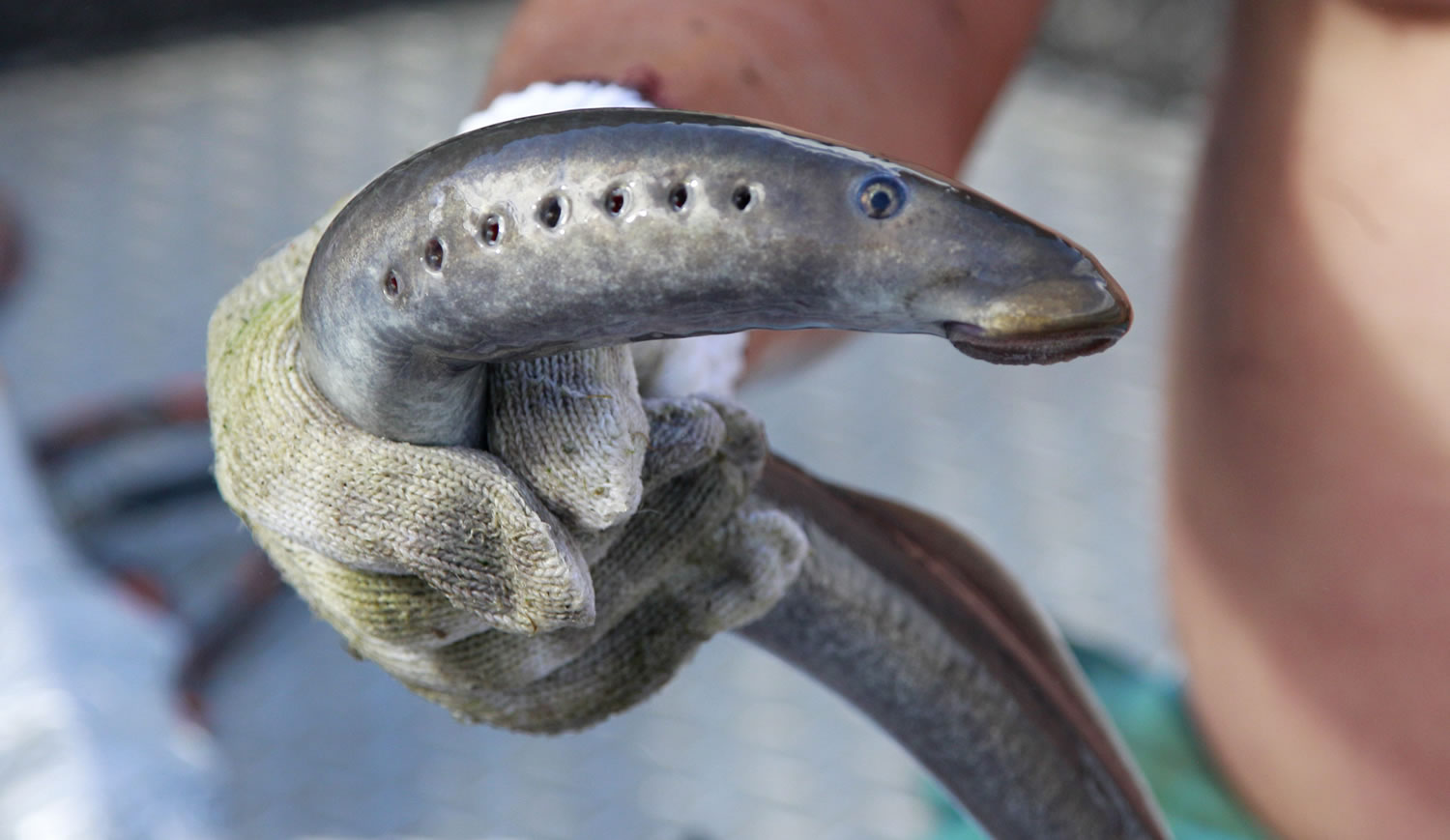In the world of migratory fish, the plight of the salmon dominates the public’s attention and the research and recovery budgets of both federal and state wildlife agencies working in Southwest Washington.
Yet there’s another, albeit much less attractive and less studied, migratory fish struggling to re-establish itself in the Columbia River Basin. Now it appears the Pacific lamprey might have done so in the White Salmon River without any intervention from wildlife managers.
For the first time in more than 100 years, lamprey were found above the former site of Condit Dam, which was demolished in 2011. Scientists believe the larvae are the offspring of adults spawning in habitat that was once off-limits.
“It’s really exciting and it makes us all kind of smile,” said Jeff Jolley, a fish biologist with the U.S. Fish and Wildlife Service.
This marks the second time lamprey have been found above a former dam site. Earlier this year, biologists found some above the onetime dam site on the Elwah River in Olympic National Park.
Pacific lamprey are the stuff of nightmares. The roughly two-foot-long, eel-like fish has no true fins, jaws or even bones — and instead of gills, they rely on rows of air holes along their heads to breathe. They feed as parasites, latching onto a variety of fish with toothy, suction-cup mouths. Like salmon, they hatch in freshwater streams, then go out to the ocean for two to three years before returning once more to spawn.
Researchers found the tiny lamprey larvae last summer while monitoring the parts of the river above and below the former dam site. At first, Jolley and the other scientists weren’t very surprised, believing they found the resident brook lamprey, which was found on both sides of the dam before it was removed. Then, about a month ago, they got the results from a genetics lab.
“Looking at the data, I did a double take. We got at least 10,” he said. “I was pretty excited about it.”
The fish play an important role in the environment and their presence in the river broadens its ecological diversity and improves conditions for other aquatic animals. However, scientists know relatively little about them, especially compared with salmon. But the finding gives researchers an opportunity to further study what looks to be a naturally recolonizing population.
Jolley said he wants to go back up to the White Salmon this summer and see if the Pacific lamprey’s range is expanding.
“When I started working on Pacific lamprey, we hardly scratched the surface,” Jolley said. “Everything we discover is new to science, so it’s a lot of fun.”
Lamprey have little economic value but they are very important to tribes in the Pacific Northwest.
The Yakama Nation and Fish and Wildlife have been monitoring the Columbia River Basin for lamprey since 2007. Yakama Nation Tribal Councilman Patrick Luck celebrated the discovery.
“This is a good day,” he said. “All lamprey need is a chance to recolonize on their own.”




